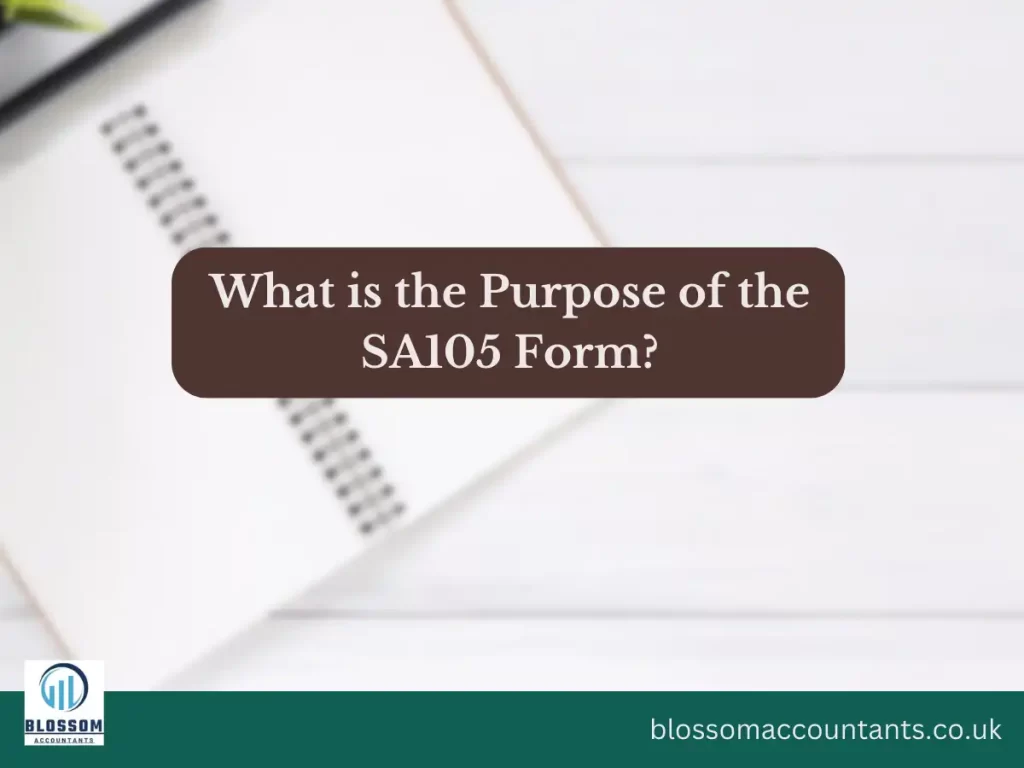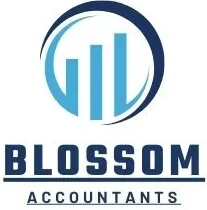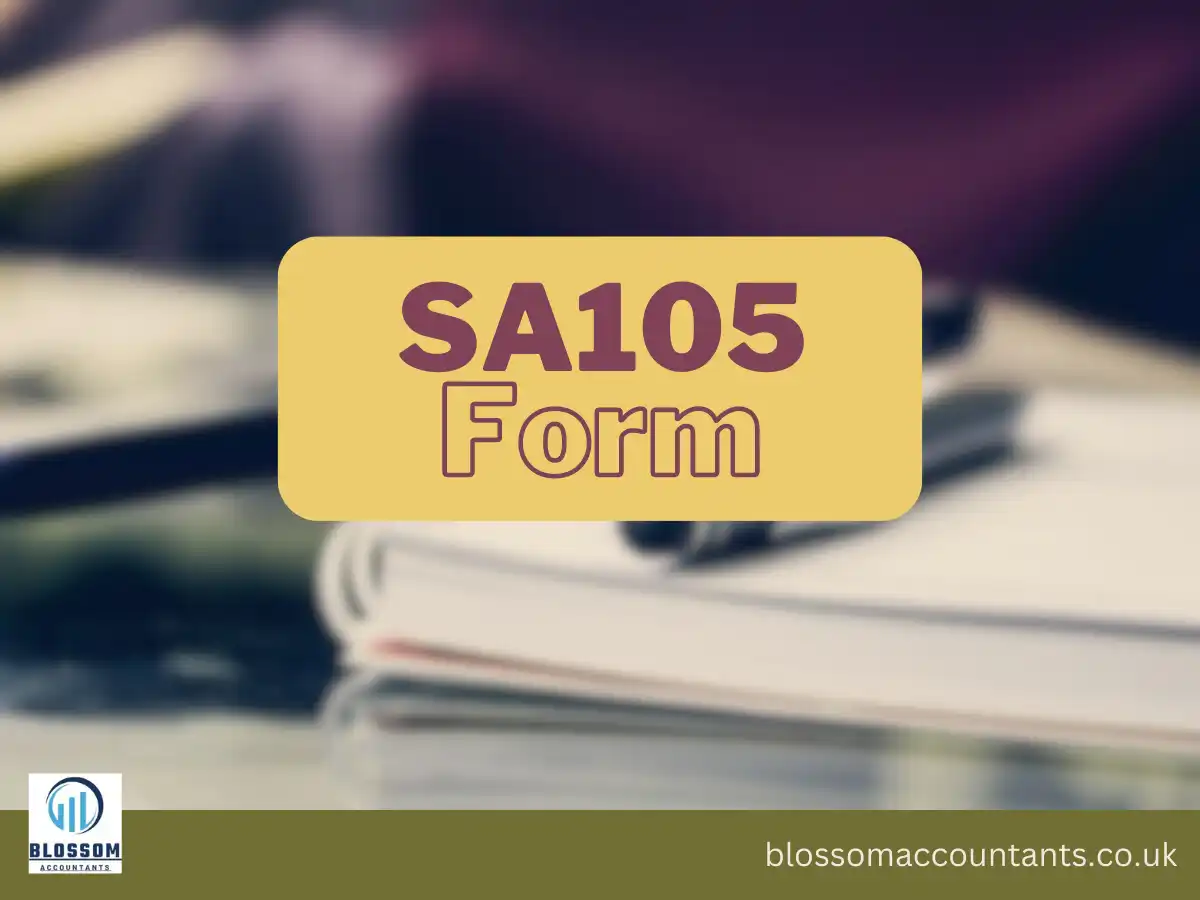The SA105 form is an important document used in the United Kingdom for reporting income from UK property. It is part of the Self Assessment tax return process and is specifically designed for individuals who receive income from rental properties or other types of UK property investments.
In this article, we will explore the SA105 form in detail, including its purpose, who needs to complete it, how to fill it out accurately, and other essential information related to reporting UK property income for tax purposes
Table of Contents
What is the SA105 Form?
The SA105 form is a supplementary form that forms part of the Self Assessment tax return in the UK. It is used to report income from UK property, including rental income and other property-related earnings.
Who Needs to Complete the SA105 Form?
You need to complete the SA105 form if you meet any of the following criteria:
You own and rent out a property in the UK.
You have received income from furnished holiday lettings.
You have income from other types of UK property investments, such as ground rents or lease premiums.
What is the Purpose of the SA105 Form?
The SA105 form serves the following purposes:
Reporting Rental Income:
It allows individuals to report their rental income from UK properties, including both residential and commercial properties.
Claiming Expenses:
The form provides sections to claim allowable expenses related to the property, such as maintenance costs, mortgage interest, and letting agent fees.
Calculating Tax Liability:
Individuals can determine their tax due on income earned by UK property by completing the SA105 form.
Also read: SA1 Form – Self Assessment

How to Fill Out the SA105 Form?
To accurately complete the SA105 form, follow these steps:
Gather Relevant Information:
Collect all the necessary information, including property addresses, rental income details, and supporting documents for expenses.
Complete the Income Section:
Report the rental income received from each property individually, including any other property-related income.
Deduct Allowable Expenses:
Enter the allowable expenses related to the property, such as repairs and maintenance costs, insurance, and management fees.
Calculate the Profit/Loss:
Deduct the allowable expenses from the rental income to calculate the net profit or loss for each property.
Report Other Property-Related Earnings:
If you have income from furnished holiday lettings or other property investments, provide the necessary details in the relevant sections.
Calculate Total Property Income:
Add up the net profit or loss figures from all the properties to arrive at the total property income.
Transfer Information to Self Assessment Tax Return:
Transfer the relevant figures from the SA105 form to the corresponding sections of your Self Assessment tax return.
What Expenses Can Be Claimed on the SA105 Form?
On the SA105 form, you can claim various allowable expenses related to your UK property, including:
Mortgage Interest:
If you have a mortgage on the rental property, you can claim a portion of the mortgage interest.
Repairs and Maintenance:
Costs incurred for repairs, maintenance, and servicing of the property.
Letting Agent Fees:
Fees paid to letting agents for managing the property and finding tenants.
Insurance:
Premiums for property insurance.
Ground Rent and Service Charges:
Payments made for ground rent or service charges on leasehold properties.
Also read: Register for Self Assessment Tax
Important Considerations when Completing the SA105 Form:
When completing the SA105 form, keep the following points in mind:
Accurate Reporting: Provide accurate and detailed information regarding your property income and expenses.
Supporting Documents: Maintain proper records and keep supporting documents for all income and expenses claimed on the form.
Deadlines: Ensure that you submit your completed SA105 form along with your Self Assessment tax return by the relevant deadline, usually by January 31st following the tax year.
What Happens After Submitting the SA105 Form?
After submitting the SA105 form as part of your Self Assessment tax return, HM Revenue and Customs (HMRC) will process the information provided. They will calculate the tax liability based on your property income and expenses and issue a tax assessment. You will be required to pay any tax owed by the payment deadline.
Also read: SA302 form (Self-Assessment Tax Calculation)

Benefits of Using the SA105 Form:
Using the SA105 form offers several benefits, including:
Comprehensive Reporting: The form provides a structured format to report all income and expenses related to UK property, ensuring comprehensive and accurate reporting.
Tax Efficiency: By claiming allowable expenses, individuals can reduce their taxable property income, resulting in lower tax liabilities.
Compliance Assurance: Completing the SA105 form ensures compliance with tax regulations, reducing the risk of penalties and inquiries from HMRC.
Seeking Professional Assistance:
While it is possible to complete the SA105 form independently, individuals with complex property portfolios or those who are unsure about tax regulations may benefit from seeking professional assistance from accountants or tax advisors. These professionals can provide guidance, ensure compliance, and optimize tax efficiency.
Conclusion of SA105 Form:
The SA105 form is a vital component of the Self Assessment tax return process for individuals earning income from UK property. By understanding the purpose of the form, who needs to complete it, and how to accurately fill it out, individuals can ensure compliance with tax regulations and optimize their tax position. Properly reporting rental income and allowable expenses on the SA105 form not only helps individuals fulfill their tax obligations but also ensures they take full advantage of available tax reliefs and deductions.
DISCLAIMER: We have written the UK accounting and tax related details for your information only. For professional advice or for any accounting task you require, you may need to speak to a professional accountant near you who can assist you. Please read our disclaimer for more details.

